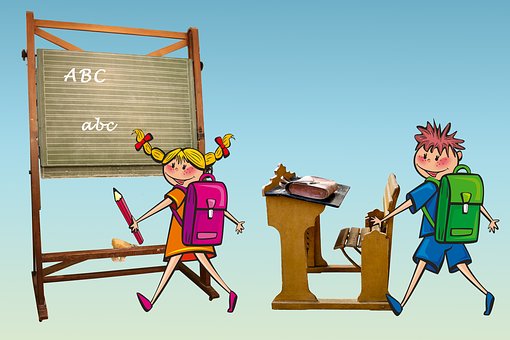Children are the biggest gift for parents. Parents can do anything for the child which will be beneficial for the child. Education is one of those priorities for the parents. The expense of education is increasing day by day. The expense has risen multi fold for every step of education from pre-schools to institutes for higher education.
Parents are advised to start saving early for the bulk expenses such as higher education, the marriage of their children etc. Parents have to be very careful about the financial planning for the child so that their child can get the best possible education without any financial constraint.

The asset allocation should be in such a way that the journey to achieve this goal takes less effort. Where I am saying about less effort means less money, the time period to achieve the goal is the biggest factor. If you start early, the power of compounding can help you in a great way.
Here are some of the key facts of financial planning for child.
Identify the Goal:
Identifying the goal is the first step towards successful investment planning. Then, fix the time frame or duration by when you want to achieve it. The goal without timeframe is just like a target and you don’t know the direction or location of it. Common investors suffer a lot due to the deficiency of well-written concrete goal with the timeframe. For an example, you have a goal of accumulating 15 lakhs for higher education of your child, the approximate time would be 18-20 years age of your child.
Now, you calculate the duration to save the corpus. In this regard, also remember about inflation. You have to identify the target amount or the corpus to be achieved factoring the inflation factor. Otherwise, the inflation may eat away all your investment and you will land up with short of money required for the child’s education.
Asset Allocation:
Goals are of three types based on the timeframe to achieve the goal, Short term, medium term and long term. The goal period of lesser than 3 years is usually called as short term and long term if it is more than 10 years. Medium term goals are of 5-8 years. If you have the short time frame to achieve the goal, it is advised to invest in the debt related instruments such as fixed deposits, liquid funds, bonds etc.
The same is applicable for the medium term also with a limited exposure to equity. You can have high exposure to equity when you have long term goal. SIP in equity mutual fund is the best route to achieve a long term goal.
Financial Products:
Following are some of the financial products/ instruments which can help you to achieve the financial needs for child’s future.
1. Equity Mutual Fund:
Equity is the best route for a target of the longer term. If you are planning to accumulate Rs 20 lakhs for your child’s education within 15 years, it is good to invest in a SIP of equity mutual fund. Monthly investing in an equity mutual fund can give a return of as high as 15% yearly. You have to invest a smaller amount to achieve the goal. For the above goal you have to invest Rs 4000 monthly, considering a conservative yearly return as 12%.
Also Read: How to Start Investing in Mutual Funds Online in Three Ways
2. Debt Funds:
Debt funds are good when you have the short time to achieve the targeted corpus. This is low-risk product and the return is moderate from 8%-10% yearly. These funds can be used for expenses such as admission fee, registration fee etc. for your child which will be required time to time. Debt funds, Bond funds, and liquid funds are the best suited for the short term goals. You can also think of bank fixed deposit and recurring deposit for the short term goals. Also, be remembered the tax implication on the bank fixed and recurring deposits. If you think of company fixed deposits for a higher return, assess your risk taking capability and other factors which can influence the decision of investment.
3. Sukanya Samridhhi Scheme:
Sukanya Samriddhi Scheme is for the persons having girl child of lesser than 10 years. This is good investment product with guaranteed return. It can be used for the education of a girl child. A maximum of Rs 1.5 lakh can be invested in one account. This is a complete tax exempted product all levels of taxation. This will be matured when your child attains 21 years old. However, partial withdrawal is allowed when the girl become 18 years old.
4. Public Provident Fund:
Public provident fund (PPF) is an excellent debt product. It has 15 years tenure to mature. It is a good investment product because it is fully tax exempted as Sukanya Samriddhi scheme. You can invest a maximum of Rs 1.5 lakhs in a financial year. Though equity mutual fund is the great investment product for a longer term like 15 years, PPF can also be thought to lower the equity exposure with guaranteed return and the maximum tax benefit.
5. Gold Bonds:
We have a tradition of using gold, especially for girls during the marriage. Gold is also an investment to beat the highly volatile market. It can create a sense of security over the other asset classes. So, you can think of savings in gold at a regular interval. In this case, gold bonds scheme is the best as it gives you the nominal return while invested in gold. The physical gold and gold ETFs cannot give you such return. Gold bonds are also secured by Government of India and you can invest as minimum as 1 gram.
When we are concentrating on child’s education, also remember about the misselling products and other financial goals of our lives. Some of the insurance companies do aggressive marketing to sell the children insurance plan. People are also happy thinking that they have secured their children’s future. Actually, they have invested in a costly insurance plan for their child.
You should be away from the following investments:
-
Child Insurance plan
Child insurance plans are to cover the life risk of the child. The insurance plans should be in the name of earners so that in absence of that person, family or dependents can be protected. The children is a not earner for a family. The fundamental difference between insurance and a child insurance plan makes it a bad insurance product. You should protect with your life with right insurance cover so that your child’s education and life’s other goal should not hamper.
Another product is available in the market where insured person is the guardian of the child. This is also insurance cum investment product. This product makes sense compare to the earlier. Insurance is to protect your child from your life risks. The premium will be waived in the case of policy holder’s death and the child will get the money as specified in the policy. Generally, this kind of plans is unit linked and beneficial for a longer term. But the experts says, term insurance for you and mutual fund for investment is the best combination. Term insurance has a lower premium. You can save the balance amount in an equity mutual fund for a better return.
Also Read: Difference between ULIP and SIP-Which is the Best
-
Retirement planning over child’s education
You have a short time and you have to save X amount for the education of your child. And you are ready to sacrifice your retirement savings for your child’s education. Is it the correct step what you have taken? I think everybody would agree that we should not compromise on the child’s education. I am also remembering you about the retirement savings when you are spending for your child’s education. If you have a shortfall of an amount for education, encourage your child to take an education loan. It will create a sense of liability and financial discipline in the child’s mind which will be beneficial for later in the life. Moreover, the interest part of EMI towards education loan is tax exempted under sec 80E of income tax act.
Hence, plan for your child well in advance and use the longer term to accumulate the required corpus.
Happy Investing 🙂



